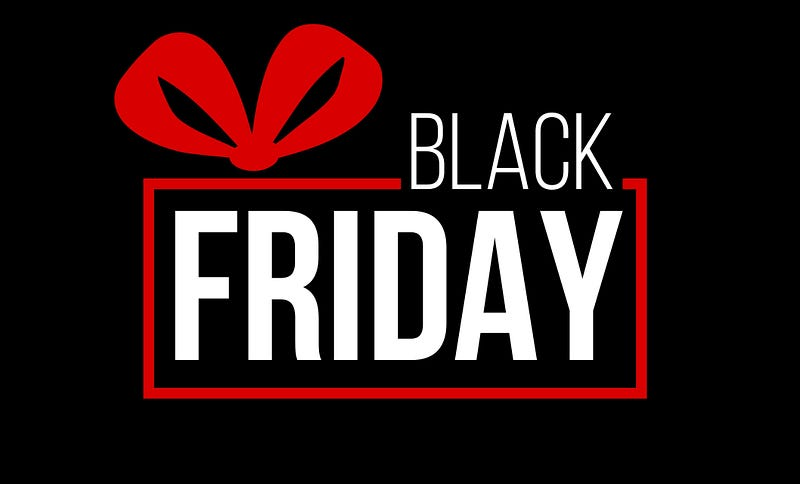As the calendar pages turn to mark the end of November, a palpable shift occurs in the retail landscape across the globe.
This period, highlighted by the twin juggernauts of Black Friday and Cyber Monday, marks an era of unparalleled consumer activity and retail dynamism. These days are not just dates on the calendar but pivotal events that shape the retail industry’s yearly performance.
With the advent of these shopping holidays, consumers morph into fervent bargain hunters, retail stores transform into battlegrounds of commerce, and digital platforms gear up for record-breaking traffic.
This article unveils the layered complexity and sheer scale of these phenomena, offering a lens through which to view the rituals of retail therapy that define the close of each year.

The Origins of Black Friday: From Chaos to Consumer Holiday
The term “Black Friday” initially had no shopping connotations.
Its roots can be traced back to 1950s Philadelphia, where it was used by the police to describe the chaotic traffic and crowds following Thanksgiving, as people began their holiday shopping and attended the Army-Navy football game.
Retailers, however, saw an opportunity to rebrand this negative term into a positive shopping event. By the 1980s, “Black Friday” was reinvented to signify the day retailers’ finances moved from ‘the red’ (losses) into ‘the black’ (profits), thanks to the massive influx of holiday shoppers.
This day has since evolved into an international retail phenomenon, symbolizing the unofficial start of the holiday shopping season, with stores offering significant discounts to lure shoppers in droves.
Cyber Monday: The Digital Response to Black Friday
Cyber Monday was born in the digital age, a direct response to the burgeoning trend of online shopping.
Coined in 2005 by the National Retail Federation’s Ellen Davis, the term was a marketing tactic to encourage people to continue their shopping online if they hadn’t finished over the Thanksgiving weekend.
Before long, Cyber Monday became synonymous with online shopping excellence, offering a convenient alternative for those who preferred to avoid the physical crowds but still wanted to take advantage of comparable deals.
It capitalized on the growing accessibility of the internet and the increasing comfort of consumers with online transactions, quickly establishing itself as the biggest online shopping day of the year in the United States.
Black Friday: The Genesis of a Shopping Marathon
Historically rooted in the tradition of kicking off the holiday shopping season, Black Friday has evolved from mere post-Thanksgiving sales into a colossal retail event.
Remarkably, about 20% of consumers allocate nearly 90% of their holiday spending budgets to capitalizing on Black Friday deals, showcasing an impressive commitment to maximizing the value of every dollar spent.
This day reigns supreme in the retail world, with clothing, apparel, and footwear consistently dominating sales, underscoring a collective desire for wardrobe rejuvenation at bargain prices.
In 2019, an astounding 190 million Americans engaged in the shopping spree that spans the Thanksgiving weekend, a testament to the event’s widespread appeal.
The following year, the pandemic notwithstanding, Black Friday online sales soared by 21.6%, setting a new benchmark with $9.03 billion in revenue. This shift not only illustrates the growing predilection for online shopping but also highlights the resilience and adaptability of consumers and retailers alike.
Cyber Monday: The Digital Shopping Revolution
Cyber Monday, the younger sibling of Black Friday, commands the digital stage, offering a haven for deal-seekers preferring the comfort of their homes over the chaos of in-store shopping. Insights from Google’s “Think with Google” initiative reveal that nearly half of U.S. shoppers start their holiday shopping by the end of October, with 59% expecting holiday deals to emerge as early as that month.
This anticipation underlines the strategic patience of consumers, who often wait for sales before finalizing purchases.
Moreover, the convenience of online shopping is underscored by the 75% of U.S. consumers who plan to conduct most of their holiday shopping digitally.
This preference is complemented by the strategic planning of in-store shoppers, over 60% of whom organize their purchases in advance to sidestep the pitfalls of out-of-stock items and crowded venues.
An interesting facet of the Black Friday shopping experience is the tradition of dining out, with 72% of shoppers likely to visit a restaurant during their spree, further fueling the economic impact of this retail holiday.

Beyond Bargains: Unraveling the Tapestry of Consumer Behavior
While electronics deals are often spotlighted, clothing remains the cornerstone of Black Friday and Cyber Monday shopping.
This preference for fashion over gadgets is reflected in the behavior of consumers, over half of whom have browsed clothing, apparel, and footwear within the last 48 hours during the shopping period. This trend significantly outpaces the interest in electronics, highlighting a broader spectrum of consumer desires that extends to toys, games, household items, and cosmetics.
The digital revolution has firmly taken root in the tradition of Black Friday and Cyber Monday, with a staggering 79% of U.S. shoppers utilizing online tools during the eventful week.
This migration to digital platforms encapsulates the evolving landscape of retail, where convenience, variety, and value converge to redefine the essence of holiday shopping.
Black Friday Statistics (Our First Choices)
- About a fifth of shoppers spend 90% of their budget on gifts during Black Friday.
- Clothing, apparel, and footwear are among the top-selling categories during the five-day spending spree.
- Almost 190 million Americans shopped during Thanksgiving weekend in 2019.
- In 2020 online spending during Black Friday increased by 21.6% and hit $9.03 billion.
- The highest so far average purchase amount of $398 ever is registered in 2018 and it was by achieved by people from North Dakota. The other two states whose residents spend the most on Black Friday are Rhode Island, and Texas.
- Black Friday topped Cyber Monday for online shopping traffic.
If you enjoyed these statistics, then keep reading because there are some more interesting facts and statistics about Cyber Monday and Black Friday, which will probably impress most of you.
As per data from Google, shared in the famous Think with Google section :
- As of the end of October, almost 50% of surveyed U.S. shoppers said they had already started their holiday shopping.
- Again as of the end of October, 59% of surveyed U.S. shoppers said they were already expecting retailers to offer holiday deals.
- And over half of surveyed U.S. holiday shoppers said they would hold off on buying gift items until they are on sale.
- More than seventy-five percent of surveyed shoppers in the USA said they would shop online more for the holidays.
- More than 60% of the shoppers going into stores said they would plan their holiday shopping earlier to find items before they’re out of stock and avoid crowds.
- 72% of all Black Friday shoppers visit a full- or quick-service restaurant while they’re shopping.
- 72% of the top 25 highest sales days for restaurants last year were in November and December.
- 89% of dining research is done by mobile before visiting a restaurant.
- 86% of people who continued to shop after Christmas week used Search for holiday-related shopping.
- More than 50 % of mobile searches for “best ___ chocolate” have increased by over 50% in the past two years (e.g., “best dark chocolate” and “best hot chocolate”).
- People say they’ve only completed 26% of their shopping heading into the 2019 Black Friday-Cyber Monday (BFCM) weekend.
- Heading into the 2019 Black Friday-Cyber Monday (BFCM) weekend, 33% of purchases yet to be made are because the shopper is waiting for a sale.
- It is a known fact that 33% of purchases yet to be made are because the shopper is waiting for a sale.
- While BFCM is often known for big electronics sales, the most significant category people are shopping for is Clothing.
- The two most popular categories during BFCM after Clothing are Apparel and Footwear.
- Over half of the shoppers (53% to be precise) say they shopped for those most popular items — Clothing, apparel, and footwear in the past 48 hours. This is almost twice more compared to 29% of shoppers who looked for electronics.
- Apart from the earlier mentioned top-searched categories during BFCM, other high-performing categories are Toys and Games (36%), Household items (21%), and Cosmetics and Personal Care(20%).
- 79% of U.S. shoppers ages 18 and older visited a website or used an app related to their holiday shopping during the Black Friday/Cyber Monday week in 2018, thus making the five days between Thanksgiving and Cyber Monday a flurry of shopping activity.

Navigating the Tides of Consumerism
Black Friday and Cyber Monday have transcended their origins to become cultural landmarks that symbolize both the opportunities and excesses of consumerism.
These events are emblematic of a broader narrative that intertwines economic trends, consumer behavior, and societal norms. As we peel back the layers of these shopping phenomena, it becomes clear that they are not merely about the pursuit of bargains but reflect the complexities of modern consumer culture.
In understanding these trends, consumers and retailers alike can better navigate the exhilarating, often frenzied, waters of the holiday shopping season, armed with insights that go beyond the surface of discounts and deals.

